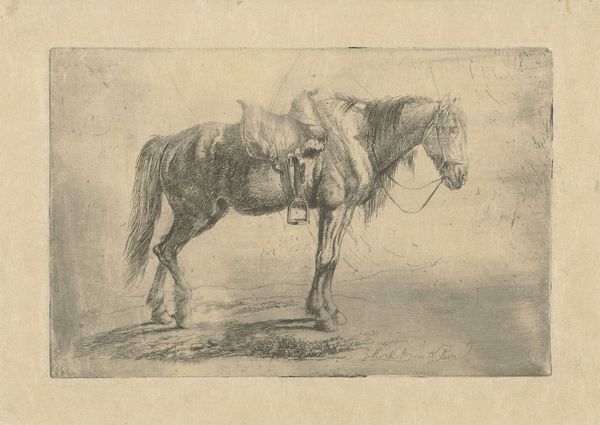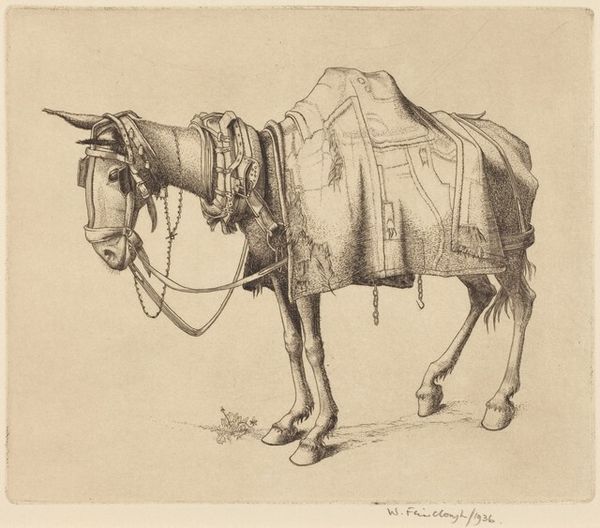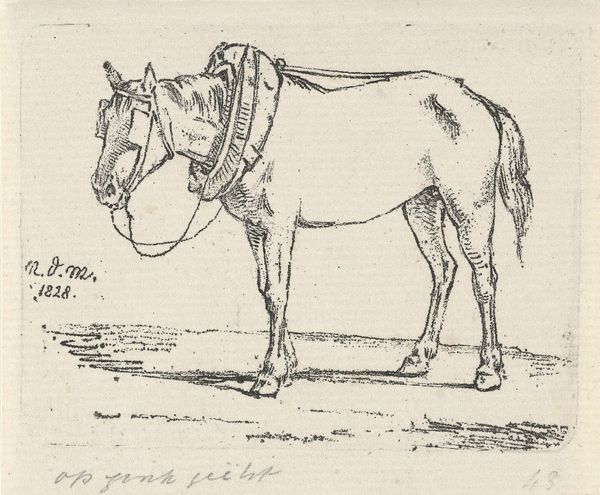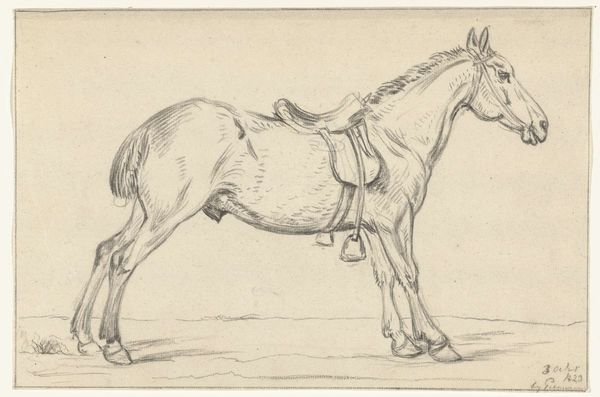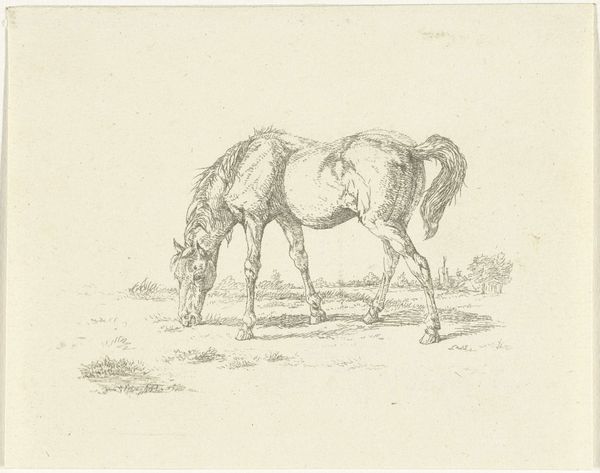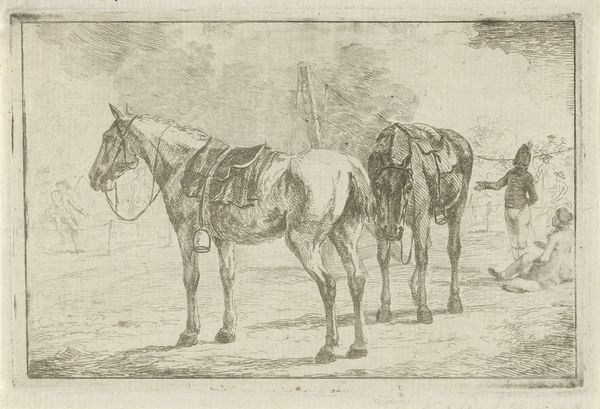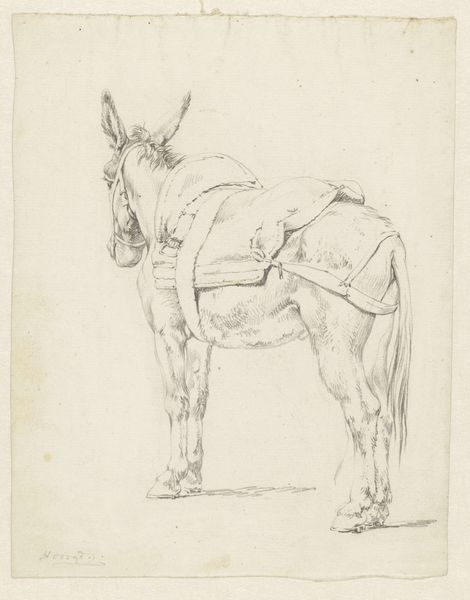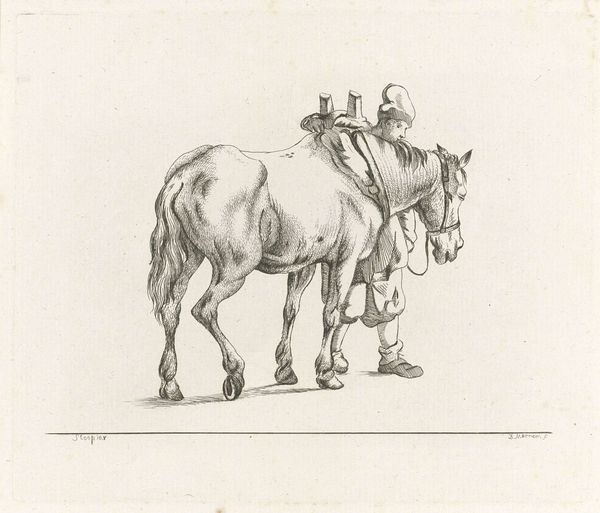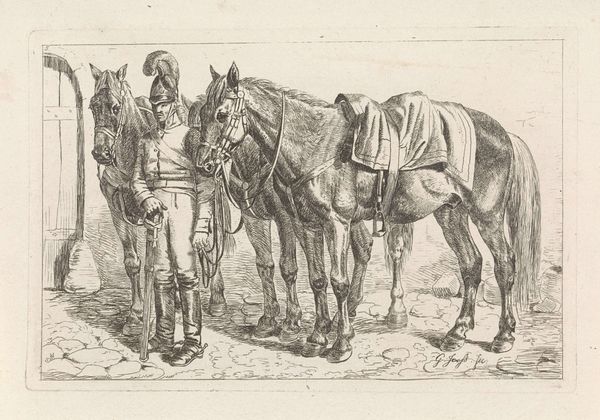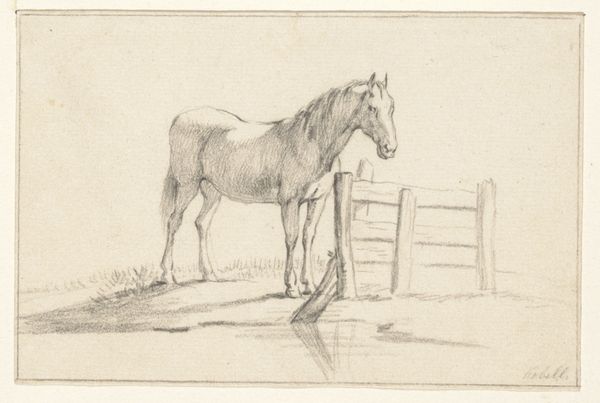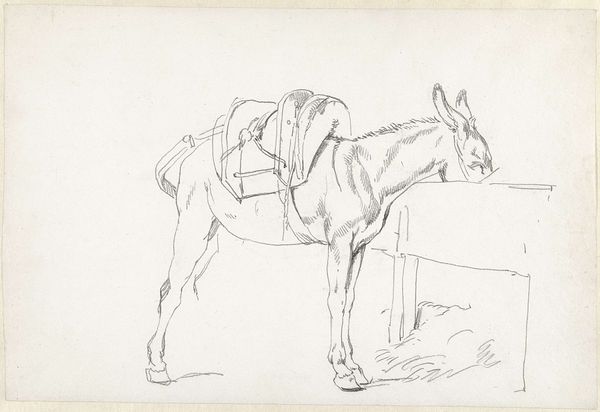
drawing, graphite
#
drawing
#
animal
#
horse
#
graphite
#
realism
Dimensions: height 96 mm, width 145 mm
Copyright: Rijks Museum: Open Domain
This etching of a saddled horse was made by Johannes Mock in the 19th century. It is a relatively humble artwork, made with simple materials – a metal plate, acid, and ink. The etching process involves covering a metal plate with a waxy, protective layer, then scratching an image into it. When acid is applied, it bites into the exposed metal, creating recessed lines. The plate is then inked, and the surface wiped clean, leaving ink only in the etched lines. Finally, the plate is pressed onto paper, transferring the image. Consider the immense labor involved in this centuries-old technique: the physical effort of preparing the plate, the skill required to create a detailed image, and the meticulous process of printing. This was how images were mass-produced before photography, requiring trained artisans and workshop production. Think about the time and effort embedded in this small print, and how it connects to broader histories of craft, labor, and the circulation of images in society.
Comments
No comments
Be the first to comment and join the conversation on the ultimate creative platform.

